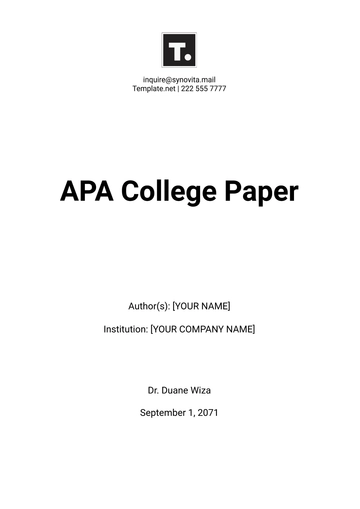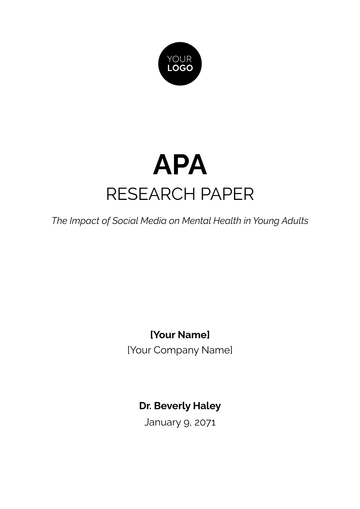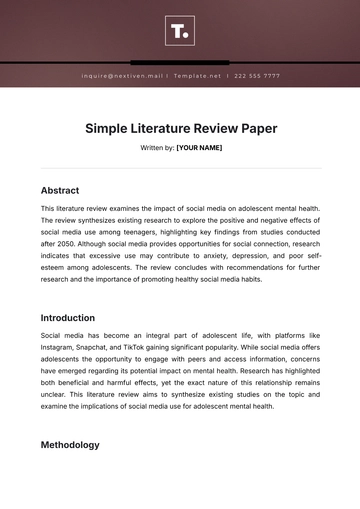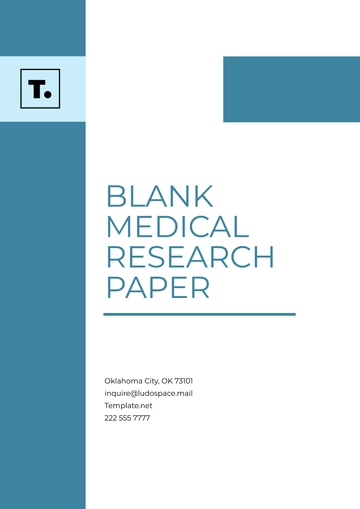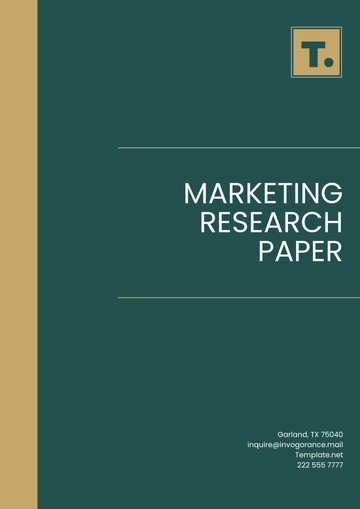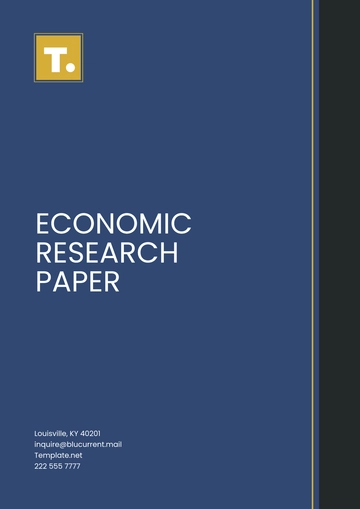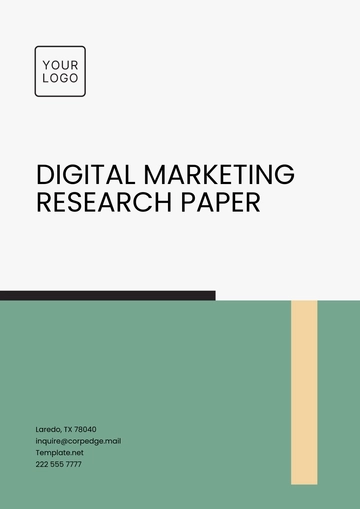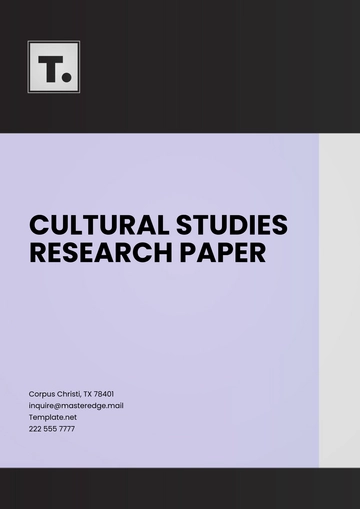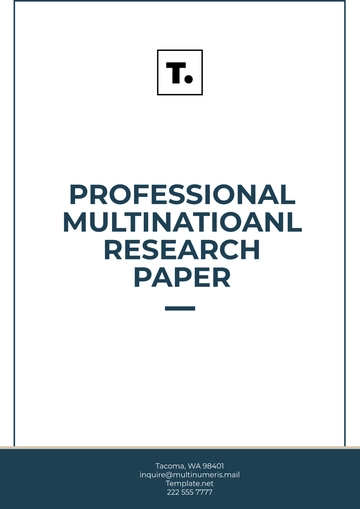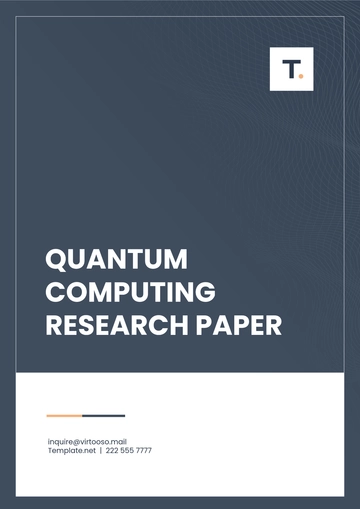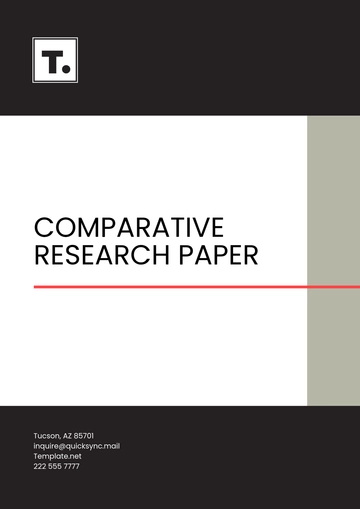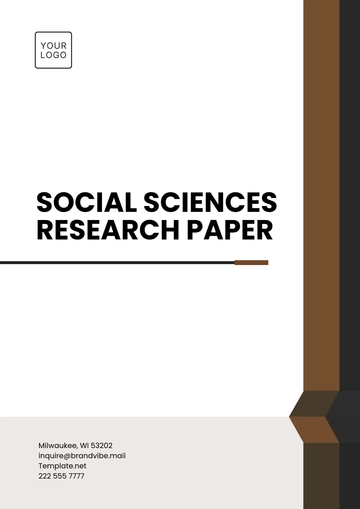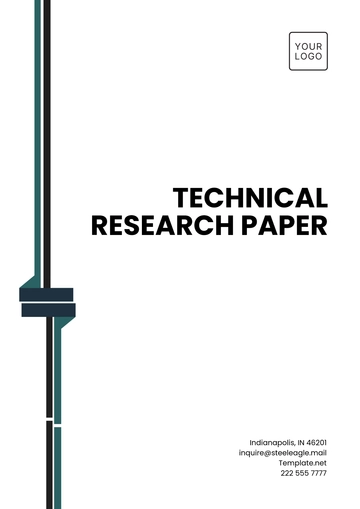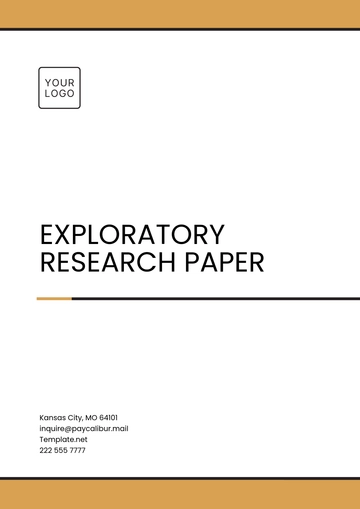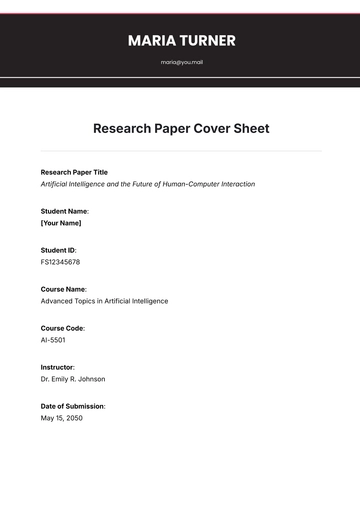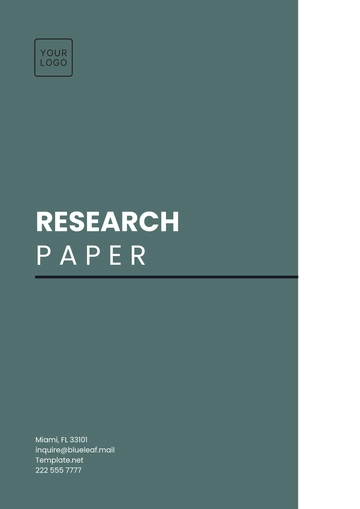Free Education Fundamental Paper
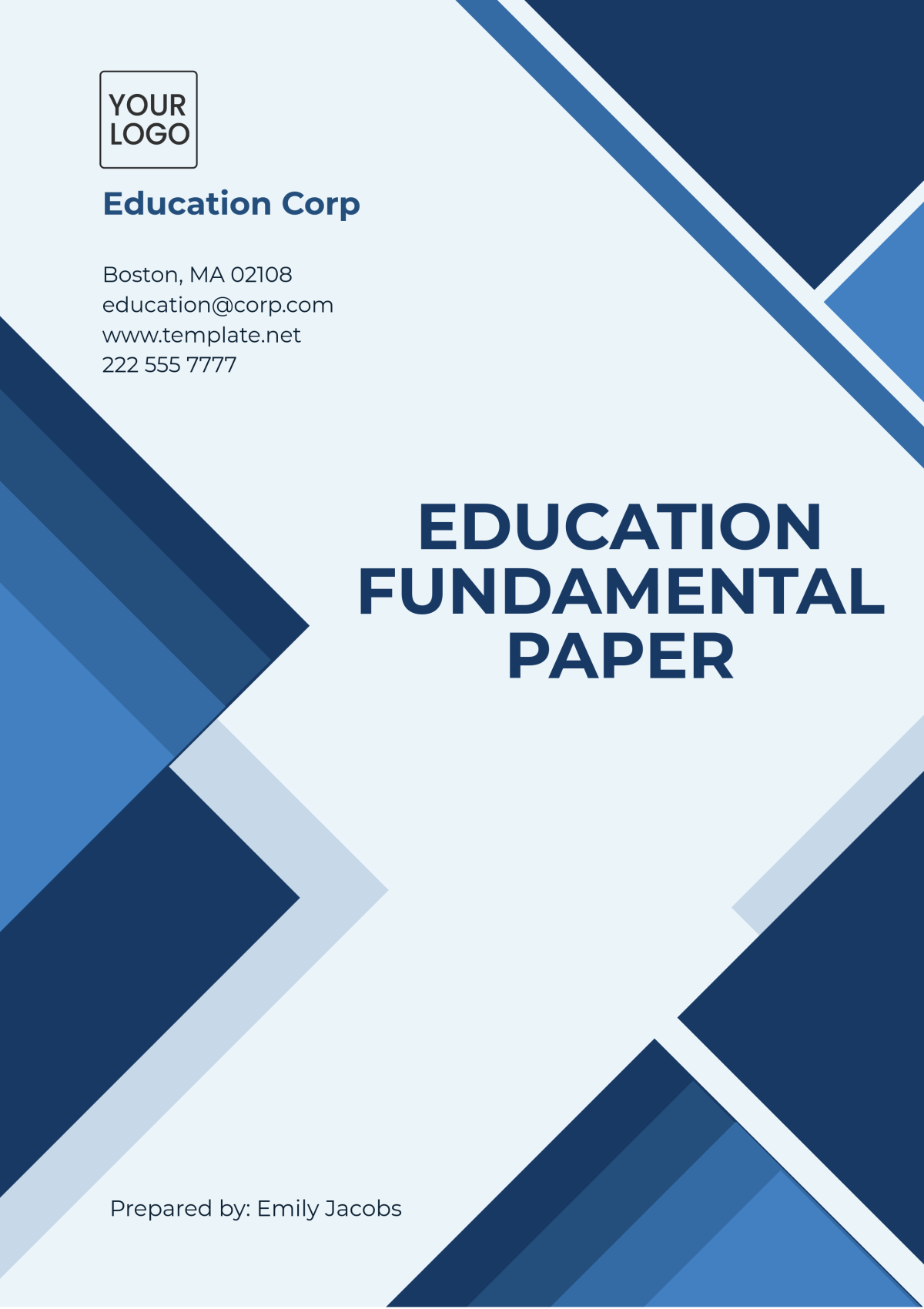
I. Introduction
In the rapidly advancing world of 2050, education is at the center of societal progress. As the global workforce evolves, the need for an innovative and dynamic educational framework becomes imperative. This paper explores the fundamental aspects of education, focusing on the technologies, methodologies, and philosophies that have shaped education in the post-2050 era. [Your Company Name] provides a comprehensive analysis of these trends, presenting forward-looking strategies to ensure education systems are aligned with future global demands.
Education now is not merely about information delivery but fostering critical thinking, creativity, and problem-solving in learners from diverse backgrounds. This paper will investigate various educational trends, technological advancements, the evolution of teaching methodologies, and the challenges faced by education systems. It will also provide recommendations for future growth.
II. Technological Innovations in Education
A. Virtual and Augmented Reality (VR/AR)
1. Immersive Learning Environments
In 2050, Virtual Reality (VR) and Augmented Reality (AR) technologies are integral to learning environments. Unlike traditional classrooms, students are immersed in 3D spaces where learning can be experiential. For example, a history lesson on ancient Rome allows students to "walk" through a meticulously recreated Roman Forum, interacting with historical events in real-time.
The use of these technologies has revolutionized the learning experience, offering greater engagement and retention. Studies show that learning retention rates with VR and AR can increase by as much as [50%] when compared to traditional methods.
2. Personalized Learning through AR/VR
In combination with artificial intelligence (AI), AR/VR offers personalized education pathways. Students can experience tailored lessons designed to meet their unique learning preferences and pace. This flexibility promotes deeper engagement, making education more inclusive and accessible to a wide array of learning styles and needs.
B. Artificial Intelligence (AI) in Education
1. AI-Powered Learning Analytics
AI-powered systems have become the backbone of education management in 2050. Schools and universities employ AI to analyze vast amounts of student data, from performance assessments to behavioral trends. This real-time analysis allows educators to adjust their teaching methods on a micro level, ensuring that students receive the right level of support.
For instance, an AI system can predict when a student might struggle with a particular topic and notify educators to intervene early. This data-driven approach has resulted in improved student outcomes, with dropout rates falling by [30%] globally.
2. AI-Assisted Teaching
AI doesn’t just support students; it’s also a crucial tool for educators. AI-driven lesson planning and grading systems reduce the administrative burden on teachers, allowing them to focus more on student interaction and creative teaching strategies. AI can suggest improvements to lesson plans based on student performance and engagement data, creating a more dynamic teaching environment.
C. The Role of Quantum Computing in Education
1. Accelerated Learning with Quantum Processing
Quantum computing, which has matured significantly by 2050, is enabling students to solve complex problems in fields such as mathematics, cryptography, and physics at unprecedented speeds. The computational power of quantum machines allows for real-time simulations in various disciplines, enhancing understanding through complex models and data analysis.
2. Quantum Systems for Personalized Learning
Quantum computing algorithms enable hyper-personalized learning experiences by processing enormous datasets to fine-tune educational content. Each student's progress, learning patterns, and comprehension speed can be analyzed instantly to create dynamic, personalized curriculums.
III. Evolution of Educational Methodologies
A. Shift to Competency-Based Learning
1. Breaking Away from Traditional Assessment
By 2050, the focus has shifted from standardized testing to competency-based learning (CBL). This educational model prioritizes skills mastery over rote memorization and standardized assessments. Competency-based learning ensures that students progress through subjects based on their ability to demonstrate mastery rather than by adhering to a fixed schedule.
Incorporating practical applications in assessments, such as simulations and real-world problem-solving tasks, offers a more accurate gauge of a student's capabilities. The adoption of CBL has resulted in higher skill proficiency rates, with surveys showing a [25%] increase in student competencies by the age of [18].
2. CBL’s Role in Workforce Readiness
Education systems are increasingly integrated with workforce demands. CBL ensures that students not only meet academic goals but also develop skills critical for employment in the modern economy. By focusing on competencies like collaboration, digital literacy, and innovation, educational institutions prepare students for industries of the future, from space exploration to advanced healthcare sectors.
B. Project-Based Learning (PBL)
1. The Rise of Hands-On Learning
Project-Based Learning (PBL) continues to flourish in the 2050 education landscape. PBL encourages students to work on real-world projects over extended periods, promoting collaboration, communication, and creative problem-solving skills. This approach directly contrasts with passive learning, as students must apply theoretical knowledge to tangible projects.
2. Global Collaboration in PBL
With the advent of advanced communication technologies, project-based learning is no longer restricted to local teams. Students now collaborate globally on projects through advanced telepresence systems, exchanging ideas and innovations across continents. This international collaboration fosters cultural awareness, empathy, and cooperation—skills essential in the globalized economy of 2050.
IV. Societal Impacts on Education
A. Inclusivity and Accessibility
1. Education for All
By 2050, ensuring equitable access to education remains a critical priority for global societies. Technological innovations such as AI and VR are used to remove barriers faced by students with disabilities. Adaptive learning platforms can be personalized to suit the needs of individuals, from neurodivergent students to those with physical disabilities.
Online education platforms provide access to high-quality education regardless of geographical location, resulting in an [80%] increase in participation rates in remote areas. Furthermore, translation technologies ensure language is no longer a barrier, allowing students from different linguistic backgrounds to engage fully in the same lessons.
2. Gender Parity in Education
Efforts to ensure gender parity in education have seen remarkable progress. Governments and private institutions, including [Your Company Name], have implemented policies and campaigns to support girls and women in accessing education, particularly in STEM fields. By 2050, female representation in STEM has grown to [50%], doubling the rate of the early 21st century.
B. Lifelong Learning
1. Continuous Education in the Workforce
As careers evolve with technological advancements, the concept of lifelong learning has become a cornerstone of the 2050 education model. Workers are encouraged, and often required, to continuously update their skills throughout their careers. In fact, [70%] of global workers are engaged in some form of continuous education, whether through online platforms or workplace-based learning initiatives.
2. Micro-Credentials and Digital Badges
Instead of traditional degrees, many workers now pursue micro-credentials and digital badges to demonstrate specific skill sets. These certifications, often acquired through short courses or on-the-job training, are recognized by employers and educational institutions alike. This shift reflects the growing demand for specialized skills and the need for continuous skill development throughout one's career.
V. The Future of Educational Institutions
A. Virtual Universities
1. The Rise of Global Online Campuses
With the technological revolution, many universities have transitioned to fully virtual campuses, offering a global reach without the physical constraints of traditional institutions. By 2050, virtual universities like [Your Company Name’s] Education Portal have become the standard for higher education, enabling students to attend top-tier institutions from anywhere in the world.
These institutions provide flexible learning schedules, adaptive curriculums, and immersive digital environments. As a result, the virtual university model has seen enrollment rates increase by [60%], democratizing access to education for learners worldwide.
2. Hybrid Models of Education
Despite the rise of virtual universities, many institutions adopt hybrid models, combining digital and physical learning experiences. This model allows students to benefit from the flexibility of online learning while still engaging in hands-on experiences in fields like engineering, medicine, and the arts.
B. The Role of Corporations in Education
1. Corporate-Education Partnerships
Corporations increasingly collaborate with educational institutions to align curriculum with industry needs. By 2050, most universities partner with companies to offer students direct pathways to employment through internships, apprenticeships, and tailored academic programs. These partnerships ensure that students graduate with the practical skills required in the job market, minimizing the education-employment gap.
2. Corporate-Led Learning Platforms
In addition to partnerships, many corporations develop their own learning platforms, providing employees and the public with access to specialized education. For example, [Your Company Name] has established its learning platform, offering training in areas such as artificial intelligence, cybersecurity, and space technology. This model allows employees to upskill while ensuring that businesses have access to the most up-to-date talent.
VI. Challenges and Recommendations for the Future
A. Digital Divide
1. Ensuring Equal Access to Technology
One of the persistent challenges of the 2050 education landscape is the digital divide. While many advancements have improved accessibility, there remain significant disparities in access to the necessary technologies, especially in developing regions. Approximately [15%] of students worldwide still lack reliable access to the internet or digital learning tools.
2. Policy Interventions and Infrastructure Investment
To address this, policymakers must continue to prioritize infrastructure investments. Public-private partnerships, such as those led by [Your Company Name], can help bridge this gap. Furthermore, government incentives to reduce the cost of digital devices for underprivileged students can improve access to education for all.
B. Teacher Training and Support
1. Teacher Development in a Technological Age
As technology continues to transform education, it is critical that teachers receive ongoing training to keep pace with new developments. By 2050, educators are expected to master a range of digital tools, from AI-based assessment systems to immersive AR/VR platforms. Without proper support, the transition to tech-driven teaching can overwhelm educators.
2. Continuous Professional Development Programs
Investment in continuous professional development (CPD) programs for teachers will ensure they are well-equipped to manage future classrooms. Teachers should have access to training modules that align with the latest educational trends. [Your Company Name] recommends creating a global teacher network to facilitate knowledge exchange and collaboration among educators worldwide.
VII. Conclusion
Education in 2050 has undergone a fundamental transformation, driven by advancements in technology and shifts in societal needs. Virtual and augmented reality, artificial intelligence, and quantum computing have reshaped the classroom, enabling personalized, competency-based learning experiences. These innovations, coupled with a greater focus on inclusivity and workforce readiness, have made education more dynamic and accessible.
However, challenges like the digital divide and the need for continuous teacher support remain. Moving forward, it is essential that governments, educational institutions, and corporations collaborate to address these challenges and ensure the continued evolution of education systems globally.
[Your Company Name] remains committed to advancing education through innovation and strategic partnerships, preparing the next generation for a future filled with endless possibilities.
- 100% Customizable, free editor
- Access 1 Million+ Templates, photo’s & graphics
- Download or share as a template
- Click and replace photos, graphics, text, backgrounds
- Resize, crop, AI write & more
- Access advanced editor
Draft comprehensive academic papers with the Education Fundamental Paper Template from Template.net. This editable and customizable template provides a structured format for educational research. Personalize it in our Ai Editor Tool to suit your specific paper requirements.


